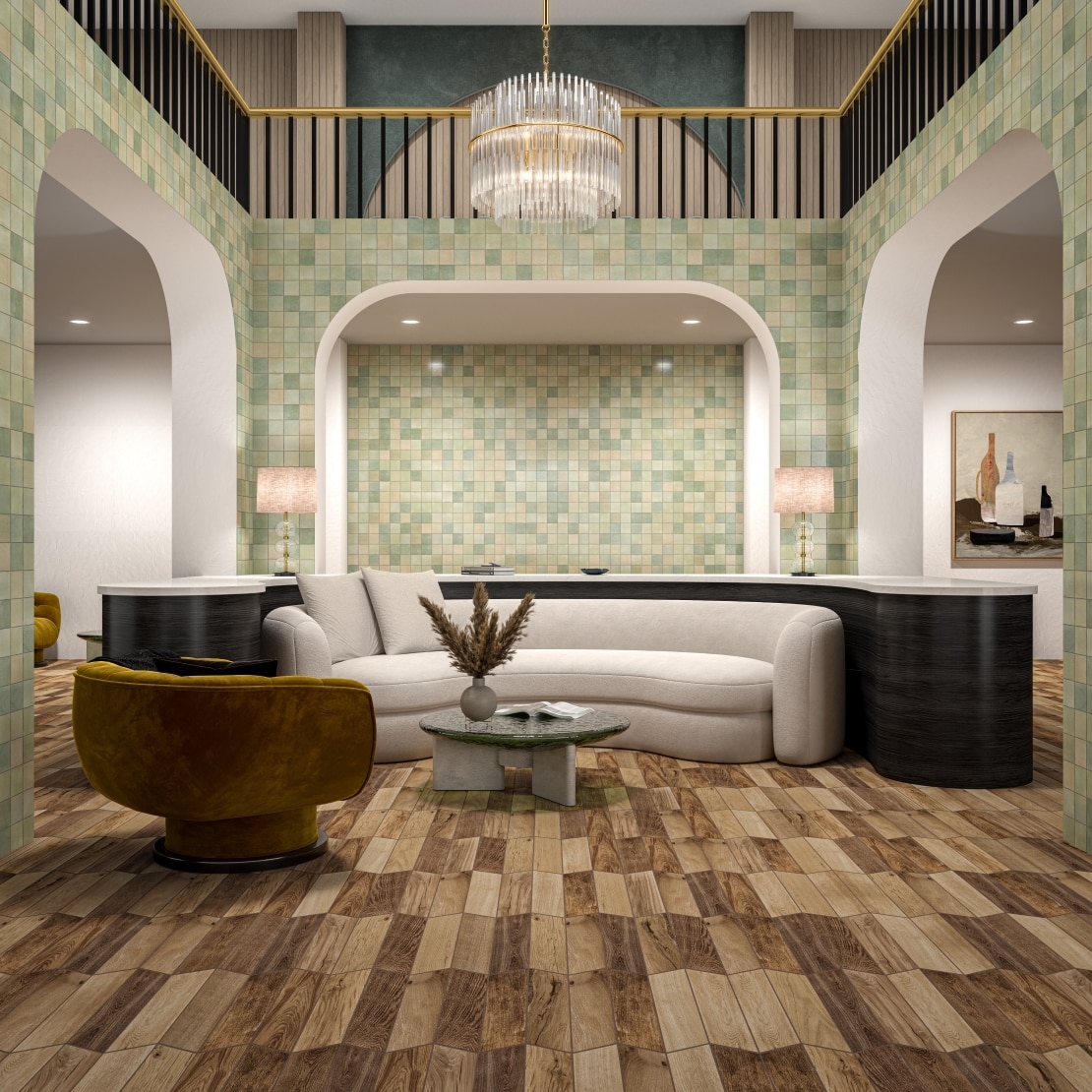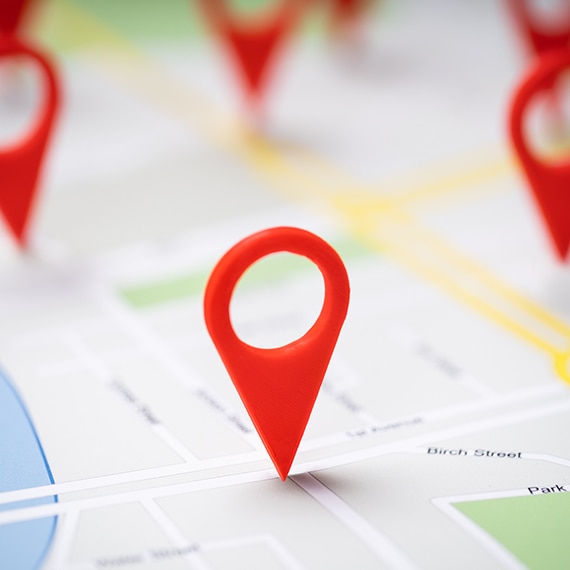Factors to Consider When Selecting Tile
Ceramic and porcelain tiles shouldn’t be used in areas where oil, grease, or water is expected on the floor both indoors or out.
Proper maintenance, care, and cleaning will minimize slippery buildup that can result in risky situations. Always follow manufacturer recommendations for the care and cleaning of tile floors.
What is DCOF?
DCOF, or dynamic coefficient of friction, is the primary product performance measure used by the North American tile industry to identify suitable applications for a floor product. When it comes to choosing the right tile for an area, DCOF is a main consideration, especially when selecting tiles for areas that may be subjected to water, oil, or grease exposure.
ANSI A137.1 requires tile flooring products to have a DCOF of 0.42 or greater if recommended for use in a level interior space intended to be walked upon when wet. This specification is based on wet DCOF measurement performed according to ANSI A326.3.
ANSI A326.3 Wet DCOF measurements are based on specific standard practices under controlled conditions. These measurements provide useful information for comparison of product performance, but measurements should not be considered as an indicator of whether a slip can occur.
Friction is the innate force that resists the sliding motion of one surface against another. The DCOF of a surface is a measurement of the force necessary to keep a surface already in motion sliding over another surface and it is likened to the frictional forces a person experiences when walking.
PUTTING SAFETY FIRST
Marazzi was among the first in 2012 to join the Tile Council of North America in testing our products for DCOF per the test method now defined in ANSI A326.3. This method is the most widely accepted measurement of dynamic coefficient of friction (DCOF) for hard surface flooring, not just on ceramic tile.
In addition to recommendations for appropriate applications, product DCOF specifications are listed on the Marazzi website.
The chart below details Marazzi’s recommended product application based on measured DCOF values. Due to limitations of the test, measured DCOF value is not an appropriate indicator of performance for all product types. For such products, different criteria are used to determine use classification per the requirements of Section 3.4 of ANSI A326.3-2021.
Regardless of declared product use classification, specifier shall determine materials appropriate for specific project conditions, considering by way of example, but not in limitation, type of use, traffic, expected contaminants, expected maintenance, expected wear, and manufacturers’ guidelines and recommendations.
DCOF Recommended Applications
Marazzi recommends that the following guidelines shall be utilized together with a regular cleaning / maintenance program.
Information in italics correspond to relevant ANSI A326.3 Section 4 - “Product Use Categories”
| Product Use Classification | Example Area | DCOF per ANSI A326.3 |
|
Dry & Level Interior
Interior Dry (ID) |
Level public areas that are DRY and contaminant free. Some examples are (but not limited to): hotel lobbies, apartments, public buildings, shopping centers (excluding food areas), hospitals, elevator lobbies, interior hallways, cafeterias, retail stores, theatre lobbies and other dry health service areas. | ≥ 0.42 Dry |
|
Wet & Level Interior
Interior Wet (IW) |
Level public areas that are likely to be walked on when WET. Some examples are (but not limited to): Entry foyers of hotels, offices and other public buildings, supermarkets (entry areas, food preparation, produce, or any area where water may occasionally be present), shopping center food courts, and toilet facilities, and production areas not involving oil or fats.
|
≥ 0.42 Wet |
|
Exterior Applications
Exterior Wet (EW) |
Level Pedestrian areas that could be exposed to water (excluding ice), but are otherwise reasonably maintained, where footwear is typically used. Some examples are (but not limited to): walkways, gazebos, or patio areas. | ≥ 0.60 Wet |
|
Pool Decking (and other wet areas with minimal footwear)
Interior Wet+ (IW+) |
Level Service or recreation areas involving constant water where light or no footwear is used. Some examples are (but not limited to): public showers, steam rooms, swimming pool decks, and locker rooms. | ≥ 0.60 Wet |
|
Oils
Oils / Greases (O/G) |
Level Service or production areas involving oils, greases, and/or fats. Some examples are (but not limited to): automotive fluids, catering areas, areas involving deep-fry and grill equipment, other food preparation areas involving grease or oil. BOH (Back of the house) quick service or family style restaurants or delicatessens. Any area where combined grease and water accumulation may be present. Marazzi recommends Quarry tile and treaded paver products for this application.
|
≥ 0.60 Wet |
| Ramps & Inclines | Inclined areas or ADA compliant ramps. Some examples are (but not limited to): Stairs and stair treads/nosings, wheelchair ramps, workshop bays (where no oil is present), sidewalks, and driveways where pedestrian traffic is normally present. | ≥ 0.65 Wet |




